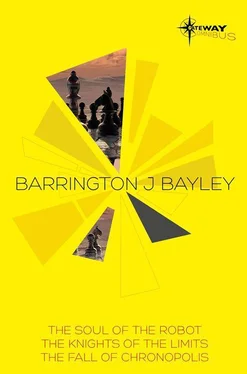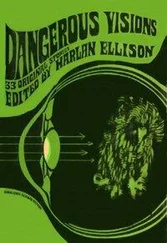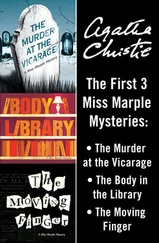So close a likeness could not be coincidence, Naylor thought. The thespitron’s repertoire was unlimited and in principle one could expect a random dramatic output from it, but in practice it showed a predilection for Elizabethan tragedy in one direction – devising dramas worthy, in Naylor’s view, of the immortal Bill himself – and in the other for Hollywood thrillers of the 1930s–50s period. Both of these were firm favourites of Naylor, the thespitron’s creator. Clearly he had unintentionally built some bias into it; sometime he would apply himself to locating its source.
The existence of Frank Nayland probably had a similar explanation, he concluded. It was probably due to an optional extra he had built into the machine, namely a facility by which the viewer could talk to the characters portrayed on the thespitron screen. In this respect the thespitron exhibited an admirable degree of adaptability – it was perfectly delightful, for instance, to see how it had automatically translated his stick-mike into a large, unwieldy 1950s telephone. Similarly, it must have absorbed his identity from earlier intrusion, fashioning it into the world of Frank Nayland.
Just the same, it was eerie to be able to talk to oneself, albeit in this fictional guise. A soupcon, perhaps, of ‘identity crisis’.
He strolled to the living-room window and gazed out. Millions of galaxies were speeding through the universe at a velocity of C 186, heading into infinity.
At length Naylor turned from the window with a sigh. Crossing the room, he settled himself in a comfortable armchair and switched on the vodor lecturer which, before leaving Cambridge, he had stocked with all material relevant to the subject in hand. Selecting the talk he wanted, he rested his head against the leather upholstery and listened, letting the lecture sink into his mind much as one might enjoy a piece of music.
The vodor began to speak.
‘IDENTITY. The logical law of identity is expressed by the formula A=A, or A is A. This law is a necessary law of self-conscious thought, and without it thinking would be impossible. It is in fact merely the positive expression of the law of contradiction, which states that the same attribute cannot at the same time be affirmed and denied of the same subject.
‘Philosophically, the exact meaning of the term “identity”, and the ways in which it can be predicated, remain undecided. Some hold that identity excludes difference; others that it actually implies it, connoting “differential likeness”. See B. Bosanquet, Essays and Addresses , 1889. The question is one of whether identity can be posited only of an object’s attributes, or whether it refers uniquely to an object regardless of its attributes…’
Naylor looked up as Watson-Smythe, his passenger, emerged from an adjoining bedroom where had been sleeping. The young man stretched and yawned.
‘ Haw! Sleep knits up the ravelled sleeve, and all that. Hello there, old chap. Still plugging away, I see?’
Naylor switched off the vodor. ‘Not getting very far, I’m afraid,’ he admitted shyly. ‘In fact, I haven’t made any real progress for weeks.’
‘Never mind. Early days, I expect.’ Watson-Smythe yawned less vigorously, tapping his mouth with his hand. ‘Fancy a cup of char? I’ll brew up.’
‘Yes, that would be excellent.’
Watson-Smythe had affable blue eyes. He was fair-skinned and athletic-looking. Although only just out of bed he had taken the trouble to comb his hair before entering the habitat’s main room, arranging his shining blond curls on either side of a neat parting.
Naylor had no real idea of who he was. He had met him at one of the temporary habitat villages that sprang up all over space. He was, it seemed, one of those rash if adventurous people who chose to travel without their own velocitator habitat, hitching lifts here and there, bumming their way around infinity. Apparently he was trying to find some little-known artist called Corngold (the name was faintly familiar to Naylor). Having discovered his whereabouts at the village, he had asked Naylor to take him there and Naylor, who had nowhere in particular to go, had thought it impolite to refuse.
Watson-Smythe moved to the utility cupboard and set some water to boil, idly whistling a tune by Haydn. While waiting, he glanced through the window at speeding galaxies, then crossed to the velocitator control board and peered at the speedometer, tapping at the glass-covered dial.
‘Will we get there soon, do you think? Is 186 your top speed?’
‘We could do nearly 300, if pushed,’ Naylor said. ‘But any faster than 186 and we’d probably go past the target area without noticing it.’
‘Ah, that wouldn’t do at all, would it?’
The kettle whistled. Watson-Smythe rushed to it and busied himself with warming the teapot, brewing the tea and pouring it, after a proper interval, into bone-china cups.
Naylor accepted a cup, but declined a share of the toast and marmalade which Watson-Smythe prepared for himself.
‘This fellow Corngold,’ he asked hesitantly while his guest ate, ‘is he much of an artist?’
Watson-Smythe looked doubtful. ‘Couldn’t say, really. Don’t know much about it myself. Don’t know Corngold personally either, as a matter of fact.’
‘Oh.’ Naylor’s curiosity was transient, and he didn’t like to pry.
Watson-Smythe waggled a finger at the thespitron, which was still playing out its black-and-white shadow show (Naylor had deliberately eschewed colour; monochrome seemed to impart a more bare-boned sense of drama). ‘Got the old telly going again, I see – the automated telly. You ought to put that into production, old chap. It would be a boon to habitat travellers. Much better than carrying a whole library of play-back tapes.’
‘Yes, I dare say it would.’
‘Not in the same class as this other project of yours, if it comes off, of course. That will be something.’
Naylor smiled in embarrassment. He almost regretted having told his companion about the scheme he was working on. It was, possibly, much too ambitious.
After his breakfast Watson-Smythe disappeared back into his bedroom to practise callisthenics – though Naylor couldn’t imagine what anyone so obsessed with keeping trim was doing space-travelling. Habitat life, by its enclosed nature, was not conducive to good health.
His passenger’s presence could be what had been blocking his progress, Naylor thought. After all, he had come out here for solitude, originally.
He switched on the vodor again and settled down to try to put his thoughts back on the problem once more.
‘The modern dilemma (continued the vodor) is perhaps admirably expressed in an ancient Buddhist tale. An enlightened master one day announced to his disciples that he wished to enter into contemplation. Reposing himself, he closed his eyes and withdrew his consciousness.
‘For thirty years he remained thus, while his disciples took care of his body and kept it clean.
‘At the end of thirty years he opened his eyes and looked about him. The disciples gathered around. “Can the noble master tell us,” they asked, “what has engaged his attention all this time?” The master told them: “I have been considering whether, in all the deserts of the world, there could conceivably be two grains of sand identical in every particular.’
‘The disciples were puzzled. “Surely,” they said, “that is a small matter to monopolise the attention of a mind such as yours?”
‘“Small it may be, but it was too great for me,” the master replied. “I still do not know the answer.”
‘In the twentieth century a striking scientific use of the concept of identity seemed for a while to cut across many logical and philosophical definitions and to answer the Buddhist master’s question. In order to handle paradoxical findings resulting from experiments in electron diffraction, equations were devised which, in mathematical terms, removed from electrons their individual identities. It was pointed out that electrons are all so alike as to be, for all intents and purposes, identical. The equations therefore described electrons as exchanging identities with one another in a rhythmic oscillation, without any transfer of energy or position…’
Читать дальше












